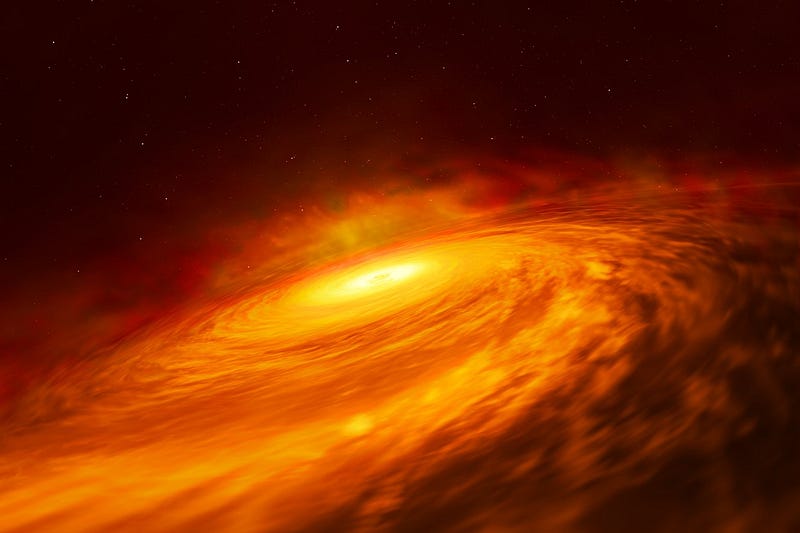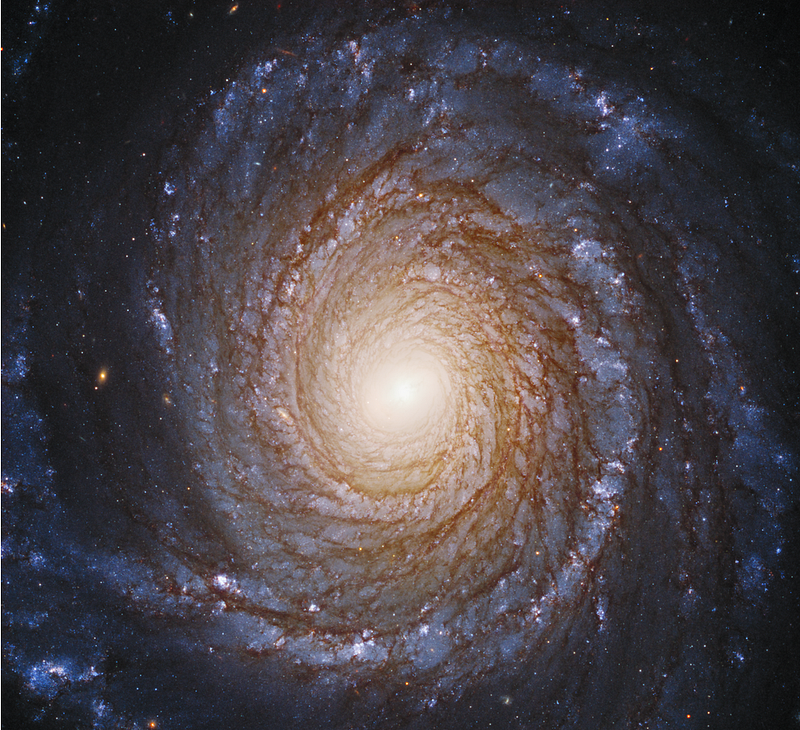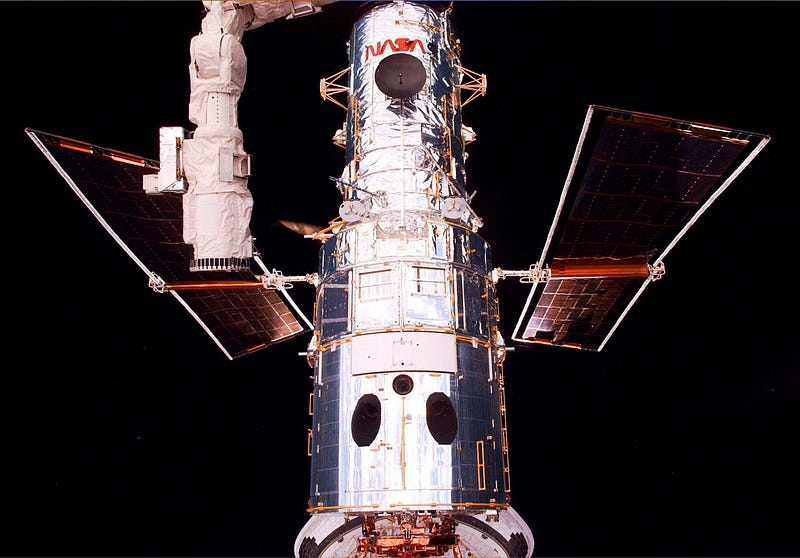An Unexplained Black Hole Discovery by Hubble Space Telescope
Written on
Chapter 1: A Baffling Discovery
The Hubble Space Telescope (HST) has identified a black hole situated 130 million light-years from our planet, which raises significant questions for astronomers. Generally, large galaxies host supermassive black holes (SMBHs) like this one, yet this particular case presents intriguing challenges. Nestled in the spiral galaxy NGC 3147, this SMBH boasts a mass 250 million times greater than that of our Sun, accompanied by a thin gas disk that conventional astronomical models suggest should not exist for such an entity.
Many black holes within galaxies, including the one at the heart of our Milky Way, often find themselves “underfed” due to a scarcity of material nearby to sustain them. This typically results in surrounding material forming a toroidal shape, akin to a doughnut. However, in NGC 3147, this aspect manifests as a slender disk, resembling those found around much more active supermassive black holes.

An artistic rendering of the disk encircling the supermassive black hole in NGC 3147. Image credit: ESA/Hubble, M. Kornmesser
Models indicate that disks similar to the one in NGC 3147 draw in material through the gravitational forces exerted by supermassive black holes, leading to immense luminosity and the formation of quasars. However, these recent observations contradict the established model.
“The type of disk we observe appears to be a mini quasar that we did not anticipate. It mirrors the disks seen in objects that are 1000 or even 100,000 times more luminous. Current models for very faint active galaxies have clearly failed,” noted Stefano Bianchi from Università degli Studi Roma Tre in Rome.

An image of NGC 3147, observed by the Hubble Space Telescope. Image credit: NASA, ESA, S. Bianchi (Università degli Studi Roma Tre), A. Laor (Technion-Israel Institute of Technology), and M. Chiaberge (ESA, STScI, and JHU)
Section 1.1: A Glimpse into Relativity
Astrophysicists may leverage this extraordinary structure to test predictions made by Albert Einstein in his groundbreaking theories of relativity. Einstein's Special Theory of Relativity, published in 1905, elucidates the effects of space and time on objects in motion, while his General Theory of Relativity, released in 1915, describes the behavior of objects under gravitational influence.
“This discovery offers a fascinating glimpse at a disk situated very close to a black hole, where the velocities and the intensity of gravitational forces are altering the appearance of light. We cannot interpret the data without incorporating the theories of relativity,” explained Bianchi.
The material orbiting this SMBH travels at 10% of the speed of light. At such velocities, the portion of the disk facing Earth appears to glow due to a phenomenon known as relativistic beaming. Additionally, the immense gravitational force of the supermassive black hole distorts the escaping light, rendering it redder than it would otherwise appear.
This video titled "Hubble Catches Possible Runaway Black Hole" explores the implications of this discovery further.
Section 1.2: A Surprising Twist
Ironically, researchers initially focused on NGC 3147 to investigate why disks do not typically form in low-luminosity active galaxies. What they uncovered was unexpected.
“We detected gas in motion that can only be explained by material rotating in a thin disk very close to the black hole,” stated Ari Laor from the Technion-Israel Institute of Technology in Haifa, Israel.
To examine celestial objects, astronomers often disperse light from stars or galaxies into spectra, akin to rainbows. By analyzing these spectra, they can infer the chemical composition of distant objects and their velocities relative to Earth.

The Hubble Space Telescope during its deployment by the Space Shuttle Discovery on February 21, 1997. Image credit: NASA/ESA
“The target was observed with the Space Telescope Imaging Spectrograph (STIS) aboard the Hubble Space Telescope on May 17, 2018. The pointing targeted the photocenter of the host galaxy and automatically adjusted to the brightest visible source in the acquisition image,” researchers noted in Monthly Notices of the Royal Astronomical Society.
The high resolution of the instrument enabled the team to isolate light from around the black hole while filtering out signals from adjacent stars. The research team aims to utilize Hubble to seek additional compact disks surrounding supermassive black holes in similar galaxies.
The second video, "Hubble Finds Hungry Black Hole Twisting Captured Star Into Donut Shape," delves deeper into the phenomena observed in NGC 3147.
Did you enjoy this article? Subscribe to The Cosmic Companion Newsletter!